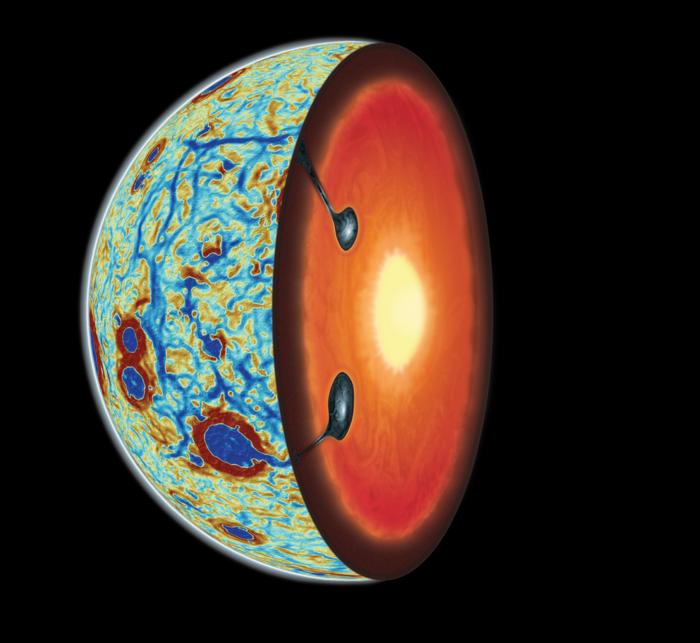Pink Floyd was wrong, there is no dark side to the Moon. There is however, a far side. The tidal effects between the Earth and Moon have caused this captured or synchronous rotation. The two sides display very different geographical features; the near side with mare and ancient volcanic flows while the far side displaying craters within craters. New research suggests the Moon has turned itself inside out with heavy elements like titanium returning to the surface. It’s now thought that a giant impact on the far side pushed titanium to the surface, creating a thinner more active near side.
There have been a number of theories for the formation of the Moon; the capture theory and the accretion theory to name two of them. Perhaps the most accepted theory now is the giant impact theory which suggests Earth was struck by a large object, causing a lot of debris to be ejected into orbit. This material eventually coalesced to form the Moon we know and love today.
In the decades that followed the Apollo missions, scientists studied the rocks returned by the astronauts. The studies revealed that many of the surface rocks contained unexpectedly high concentrations of titanium. More surprisingly was that satellite observations revealed these titanium rich minerals were far more common on the nearside and absent on the far-side. What is known is that the Moon formed fast and hot and would have been covered for a short period in an ocean of molten magma. The magma cooled and solidified forming the Moon’s crust but trapped below was the more dense material including titanium and iron.

The dense material should have sunk to greater depths inside the Moon however over the years that followed something strange seems to have happened. The denser material did indeed sink, mixed with mantle but melted and returned to the surface as titanium rich lava flows. Debates have been raging whether this is exactly what happened but a new piece of research by a team at the University of Arizona Lunar and Planetary Laboratory offer more details about the process and how the interior of the Moon evolved.
It has already been suggested that the Moon may have suffered a giant impact on the far side causing the heavier elements to be forced over to the near side but the new study highlighted supporting evidence from gravitational anomalies. The team measured tiny variations in the Moon’s gravitational field from data from the GRAIL mission. GRAIL – or Gravity Recovery and Interior Laboratory – orbited the Moon to create the most accurate gravitational map of the Moon to date. Using GRAIL data the team discovered that titanium-iron oxide minerals had migrated to the near side and sunk to the interior in sheetlike cascades. This was consistent with models suggesting the event occurred more than 4.22 billion years ago.

As paper co-author and LPL associate professor Jeff Andrews-Hanna said “The moon is fundamentally lopsided in every respect.” The near side feature known as Oceanus Procellarum is a great example. It is lower in elevation and has a lava flow covered thinner crust with high concentrations of titanium rich elements. This is very different on the far side. The strange and unique structure of the region is thought to be key in understanding the event that happened billions of years ago to shape the Moon we see today.


“Pink Floyd was wrong, there is no dark side to the Moon” erm, there is always a dark side surely, it’s the day/night cycle.
It’s possible that Moon took another one for Earth, though their earlier conference contribution [54th Lunar and Planetary Science Conference 2023 (LPI Contrib. No. 2806)] has them propose the South Polar Aitken
(SPA) basin-forming impact as the culprit. “The estimated ages of Serenitatis and SPA of ~4.22 Ga [9] and 4.25 Ga [10]
may bracket the overturn event.”
The latest root dating places the split between biology and geology at 4.4 billion years, so life survived a few crust busters – the SPA impactor leaving a 2500 km crater would fit that (~ 100 km impactor). Presumably they never got to the 300-400 km size needed to completely vaporize our ocean.